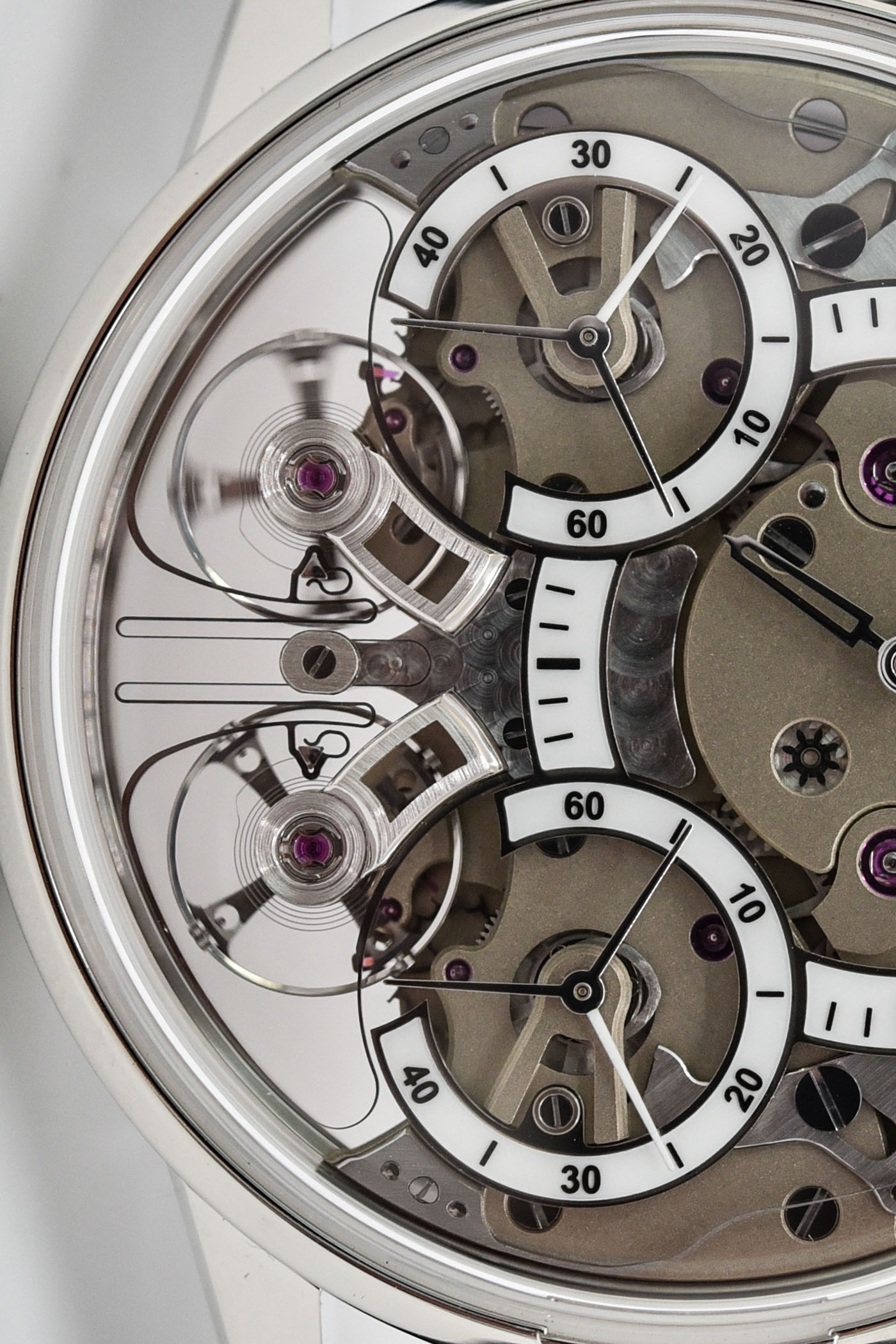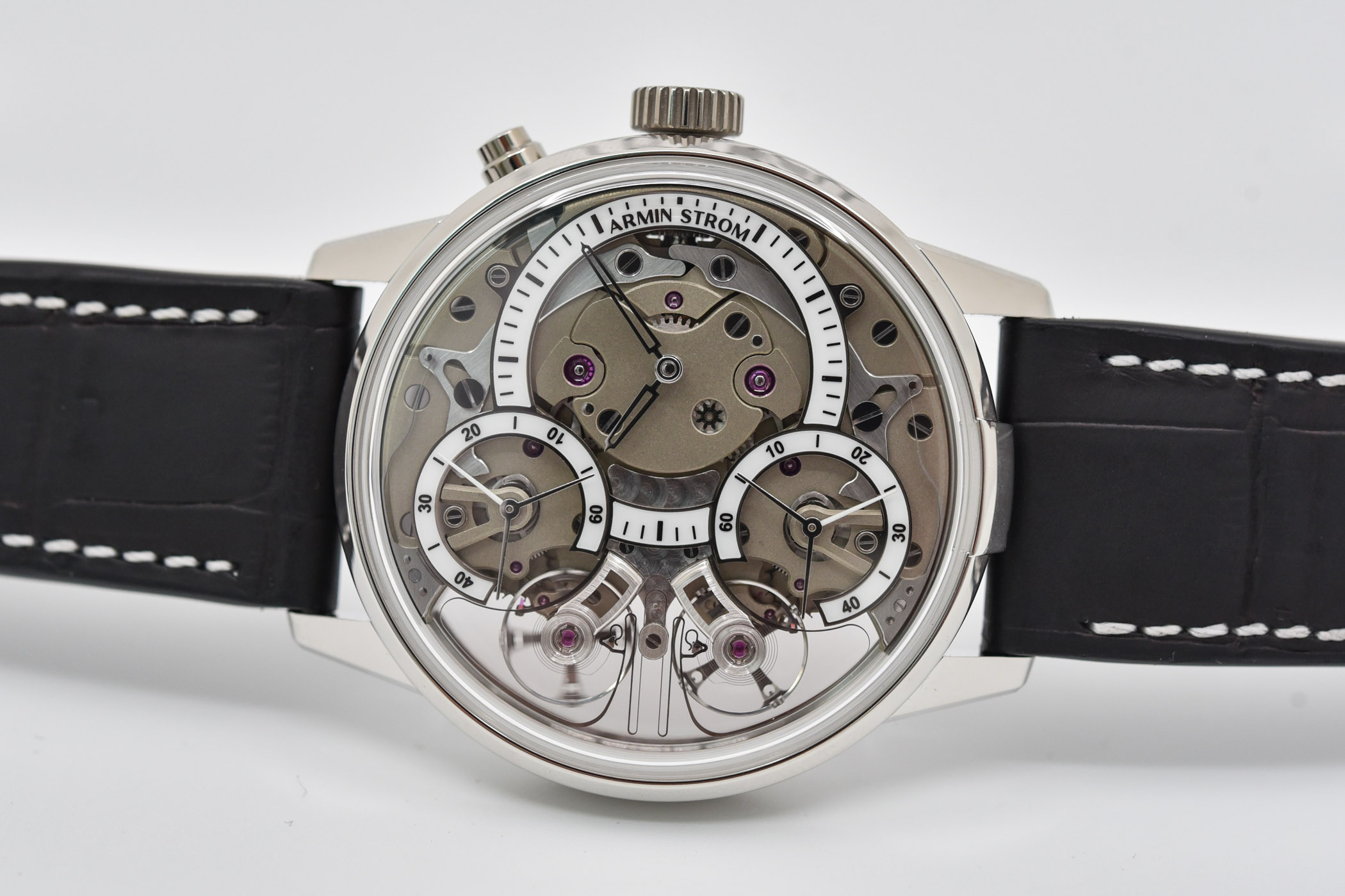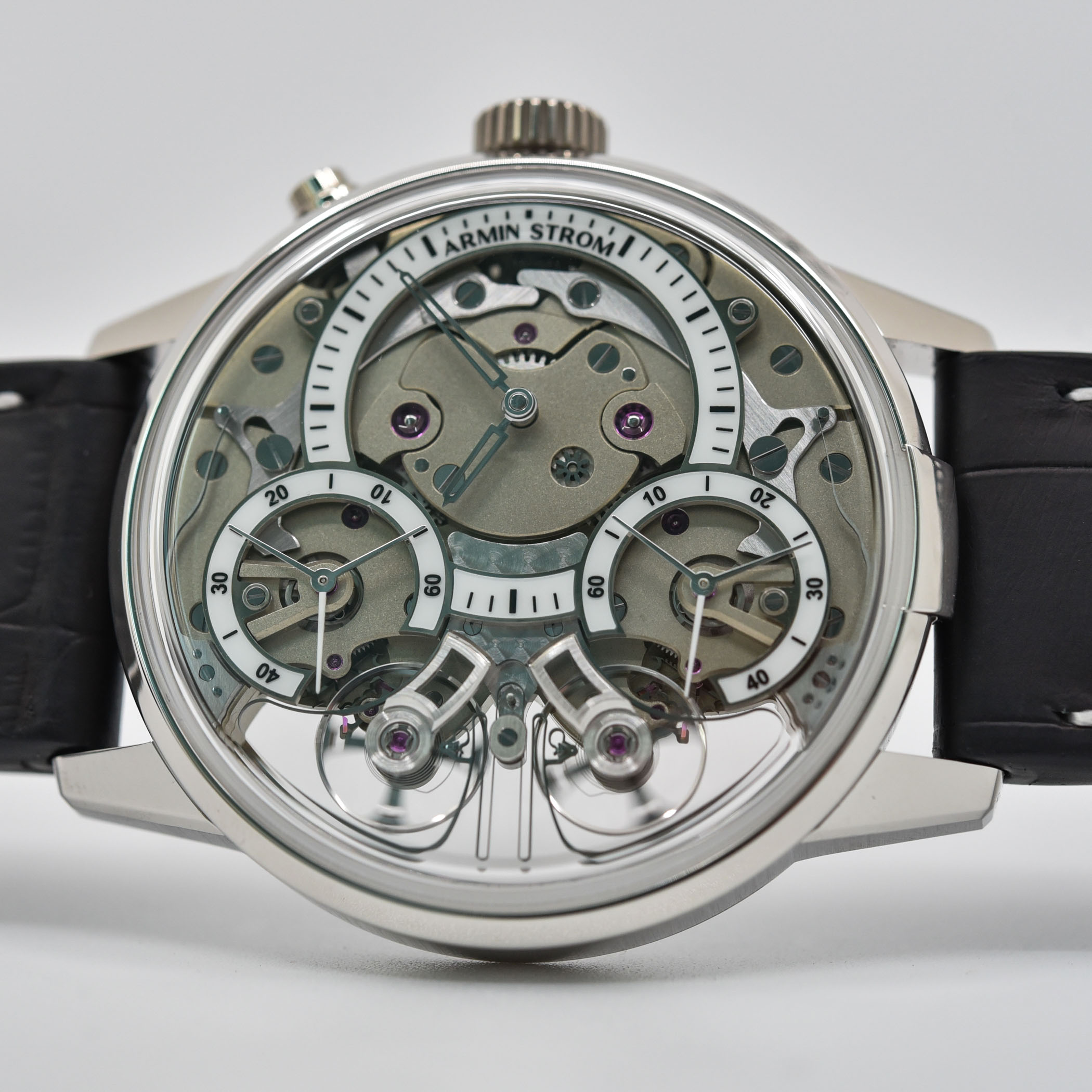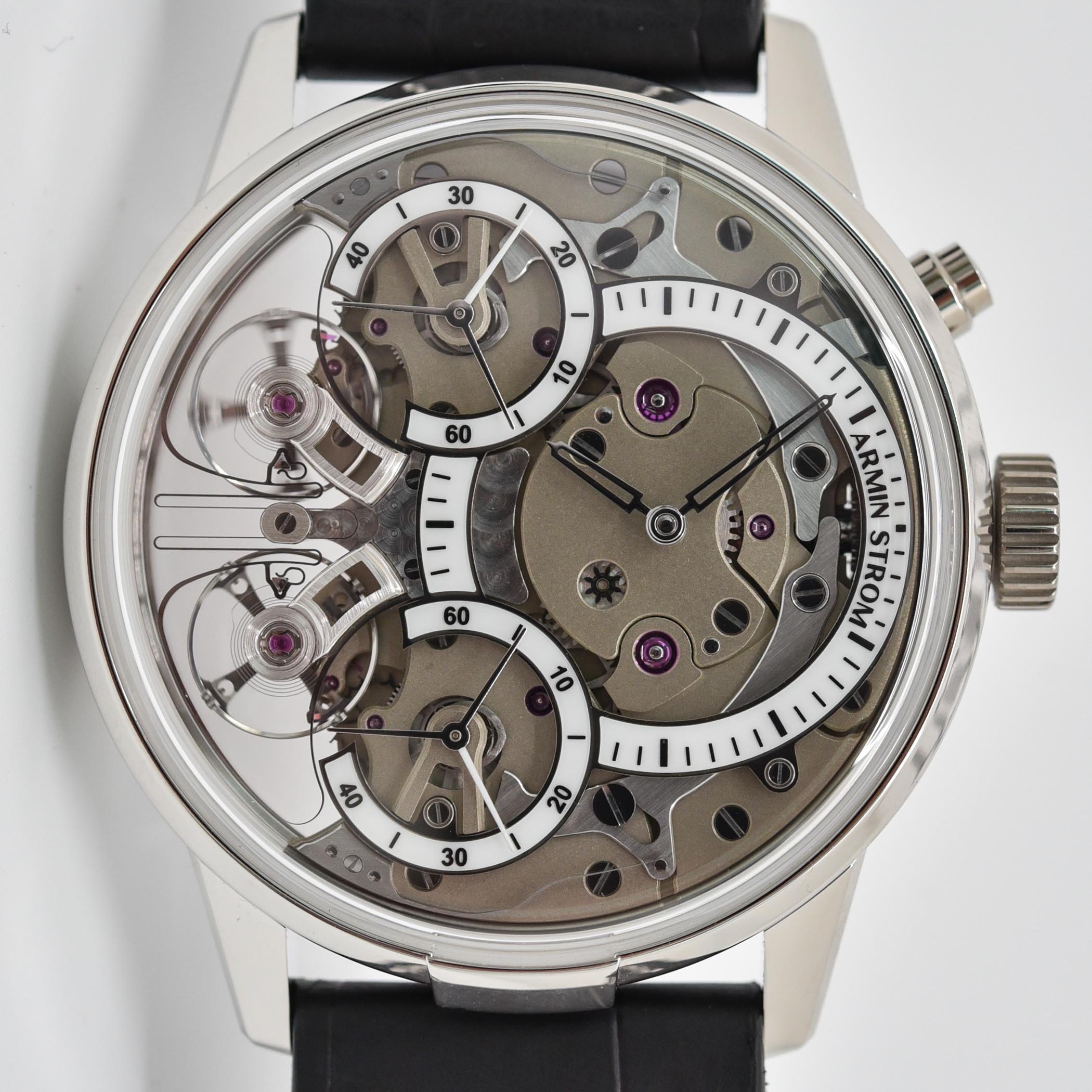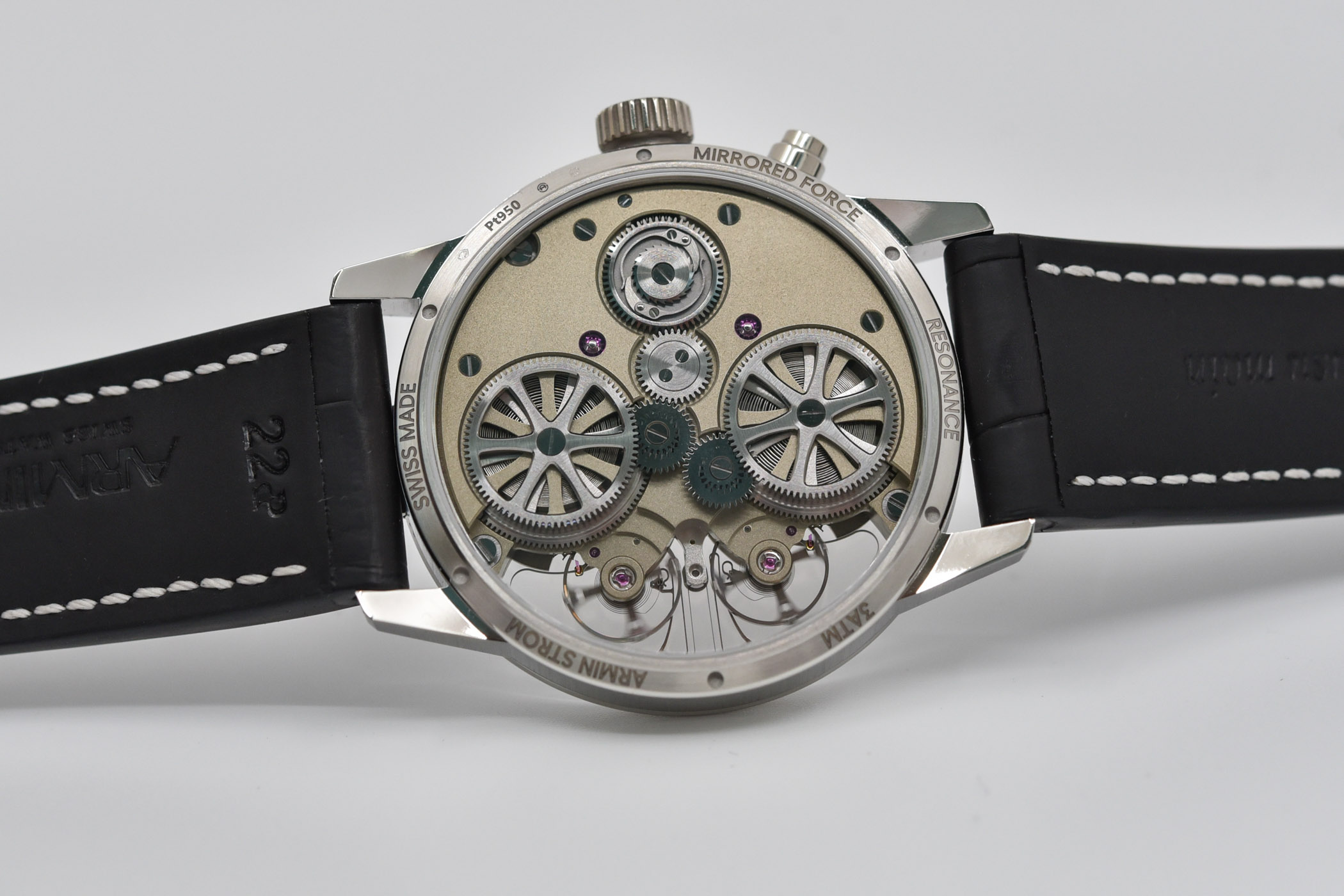The Armin Strom Zeitgeist, a Unique Piece in Platinum Celebrating Resonance Technology (Live Pics & Price)
Armin Strom’s resonance technology fully exposed on this unique anniversary timepiece celebrating a phenomenon discovered in 1655 in 21st-century dress codes.
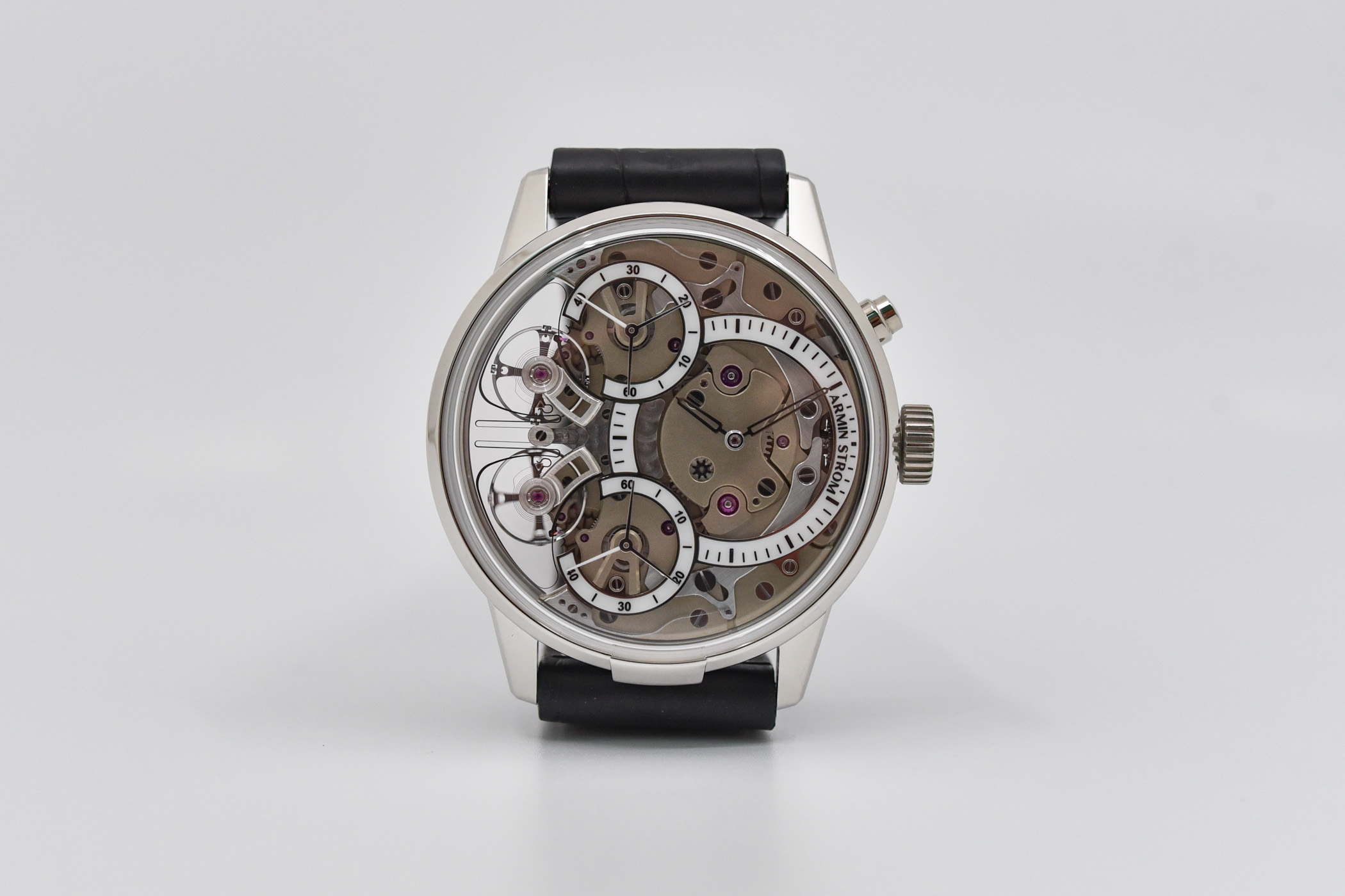
Independent Swiss manufacture Armin Strom is back in full force with a unique piece to celebrate its five years of resonance technology. First introduced in 2016, Armin Strom’s Mirrored Force Resonance revisited a phenomenon discovered by the Dutch genius Christiaan Huygens in the 17th century and incorporated it inside the diminutive dimensions of a 21st-century wristwatch. Hailed as a breakthrough in contemporary watchmaking, Armin Strom has applied resonance physics to four models, culminating in the world’s first resonance chiming watch in 2019. The latest one-off piece, the “Zeitgeist”, celebrates the fifth birthday of Armin Strom’s Mirrored Force Resonance in a luxurious platinum suit. Combining openworked areas and transparencies, the unique spectacle of two hearts synched to beat as one – thanks to the miracle of resonance – is guaranteed. Mute colours, traditional materials, sandblasted finishings and minimalist dial components underscore the contemporary soul of this watch, allowing the technical delights to command centre stage. The Zeitgeist also has a new manual-winding calibre. Similar in architecture to the movement inside the Mirrored Force Resonance, the upgraded calibre is slimmer, has more components and an extended power reserve.
Huygens and Resonance
The basic principle behind resonance is that two oscillating bodies in close proximity influence each other and eventually synchronise. This odd phenomenon was first reported in 1665 by Christiaan Huygens, the famous Dutch scientist, mathematician, astronomer and inventor. Ill and bedridden, Huygens noticed that two of his recently invented pendulum clocks were oscillating in sympathy. If the synchronisation was disturbed by some interference, it would, he observed, re-establish itself in a short period of time. The synchronisation was not just a surprising physical phenomenon, it meant that rate precision could be regulated over time providing more precise and consistent timekeepers for scientific use. Two centuries ago, Antide Janvier and Abraham-Louis Breguet adapted the system to create “Pendules Sympathiques”. For a more scientific explanation, don’t miss Xavier’s in-depth article on the phenomenon of resonance.
In 2016, Armin Strom presented one of the most spectacular applications of the phenomenon with its Mirrored Force Resonance. To replicate the conditions needed to produce resonance – and its desired outcome of regulating rate precision over time – Armin Strom’s ingenious watchmaker Claude Greisler connected twin oscillators with a steel spring attached to their studs (aka resonance clutch spring). United by this common structure, even the smallest vibrations are shared, adding or subtracting a small force from the opposite oscillator until their rate is averaged and they beat in perfect synchrony. After its debut inside the Mirrored Force Resonance, Armin Strom applied resonance technology to the more classical Pure Resonance, the enormous two-timing Dual Time Resonance and the Minute Repeater Resonance masterpiece.
Patented resonance clutch spring
Armin Strom’s patented resonance clutch spring is crafted from a single piece of steel. It is designed to transfer energy between both hairsprings to bring the balance wheels into resonance and average out errors for maximum accuracy. According to the brand, this “newest generation of resonance is the quickest and most reliable on the market, synchronizing faster than any other watch using resonance“.
If you look at the image of the resonance mechanism highlighted in red, you can appreciate the steel structure that sweeps around the balance wheel, touches the hairspring of the first oscillator and the loops up and down in the middle before connecting to the second hairspring of the second oscillator. The shape and material of the resonance clutch spring are more resistant to shocks and vibrations, and the fact that is made of steel means that it “performs more consistently than high-tech materials like silicon“.
The Zeitgeist
The name of the watch, taken from the German Zeitgeist, meaning the defining spirit or mood of a particular period of history, is spot on. Although the technology might have been discovered in the 17th century, the look of this watch, with its transparent section on the dial to admire the resonance clutch spring and frosted movement parts, is clearly 21st century. A series of matte beige sandblasted bridges, which are made from German Silver (or maillechort in French) with plenty of openworked areas provide the subtle, low-key background that gives the watch its highly technical, contemporary spirit. As many of our readers know, the brand has a long tradition in skeletonised movements and its founder, Armin Strom, was renowned for his magnificent hand-skeletonised movements.
Like the other three pieces in the Mirrored Resonance collection – in steel, gold and with a guilloché dial – the case measures 43mm, has a pusher at 2 o’clock to reset the seconds to zero and features the signature lip at 6 o’clock. However, unlike former editions, the case is now crafted in platinum and has a slimmer case height of 11.55mm.
Naturally, the stars of the show are the resonance clutch spring and dual balance wheels that are now suspended in space between the sapphire crystals over the dial and caseback. The twin balance bridges, resting on a circular-grained plate are also openworked and finished with brushed surfaces and polished bevels. The twin seconds counters, aligned horizontally are openworked with a white ring, black markings and a triple-handed seconds hand. In a departure from earlier models, the off-centred hours and minutes counter is also openworked with skeletonised hands to reveal the movement below. It’s worth mentioning that three dials are made of 18k white gold with white polished varnish and the stainless steel hands are manufactured in-house by Armin Strom and finished by hand.
Calibre ARF21-ZG
Built piece by piece, the new movement inside the Zeitgeist shares similar architecture with calibre ARF 15, but it exposes more components. Armin Strom’s new in-house manual-winding calibre ARF21-ZG has more parts than its predecessor (260 versus 226) and has almost double the power reserve (80 hours versus 48h). The view on the reverse side of the case is beautiful revealing the twin oscillators and the graceful silhouette of the resonance clutch spring suspended in mid-air.
Stacked horizontally, the two barrels reveal their mainsprings beneath their ‘spokes’, which are picked out in contrasting brushed and grained finishings. In contrast with earlier editions where the wheel train is hidden, the Zeitgeist exposes the interlocking gears set against a grained beige matte background. Beating at a frequency of 2.5Hz, the hand-wound movement delivers a power reserve of 80 hours.
Availability and price
The Armin Strom Zeitgeist Mirrored Force Resonance is a unique piece and retails for CHF 160,000, EUR 150,000 or USD 170,000. For more information, please visit the official Armin Strom website.



